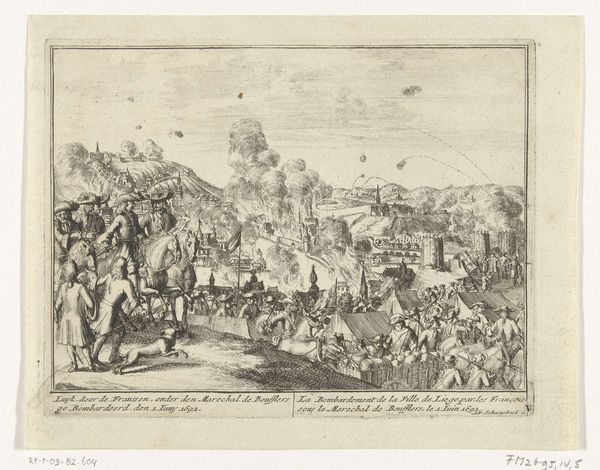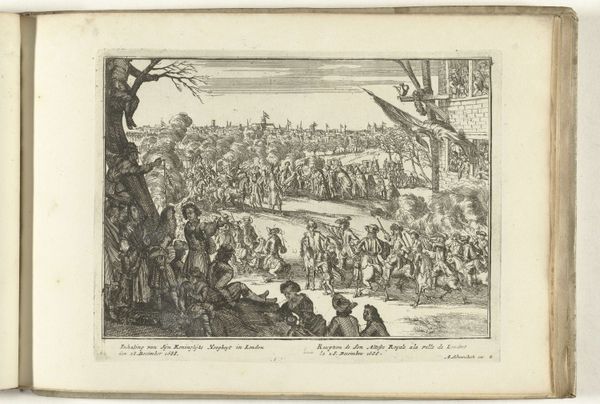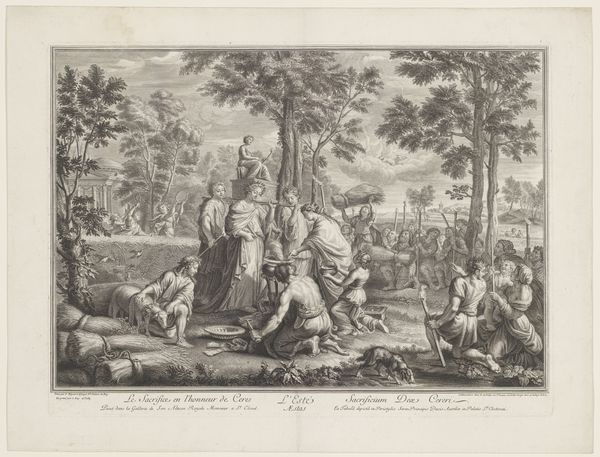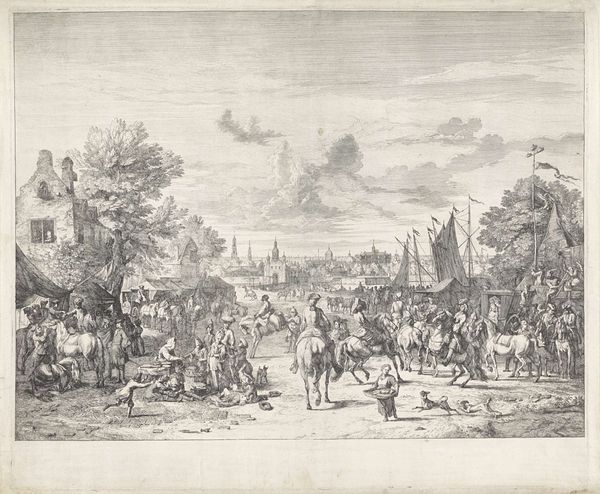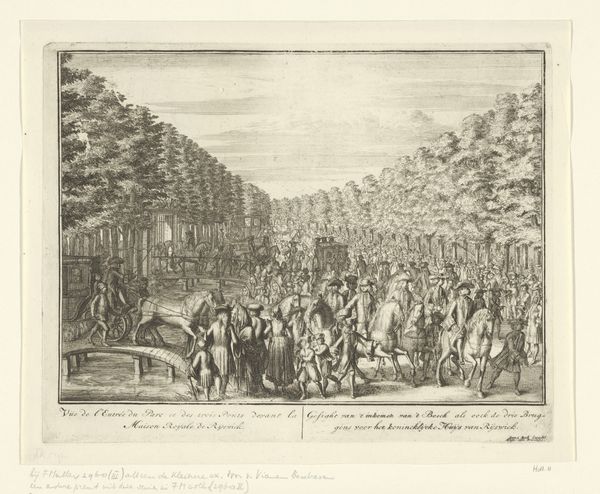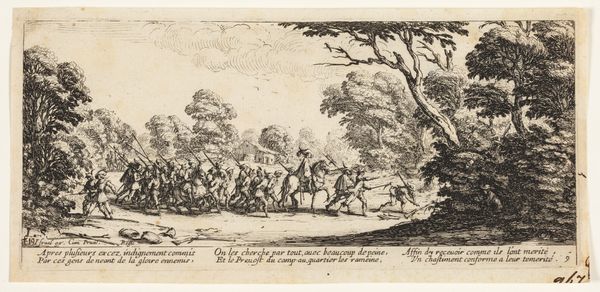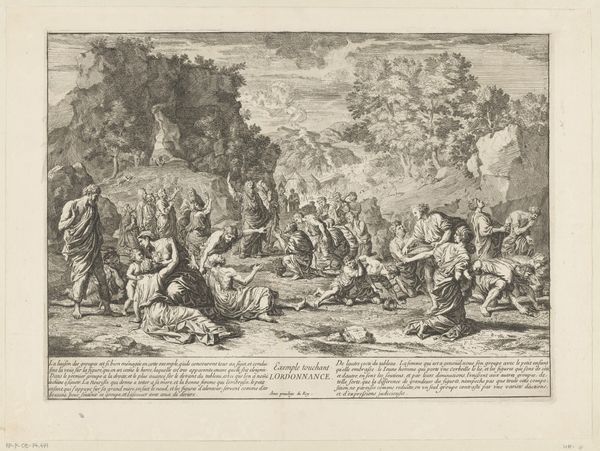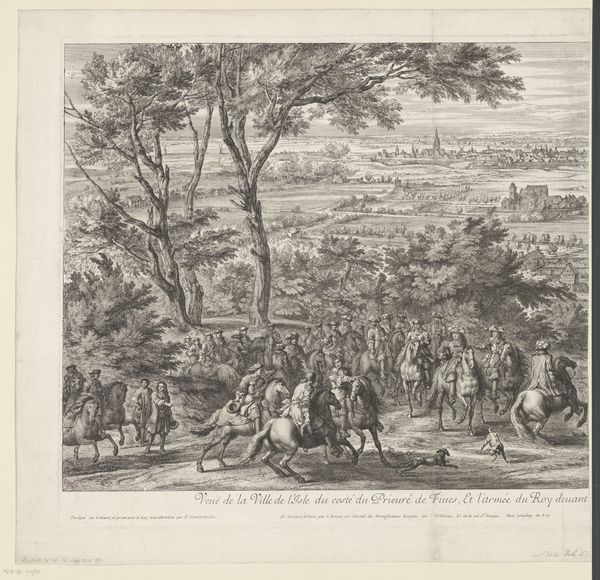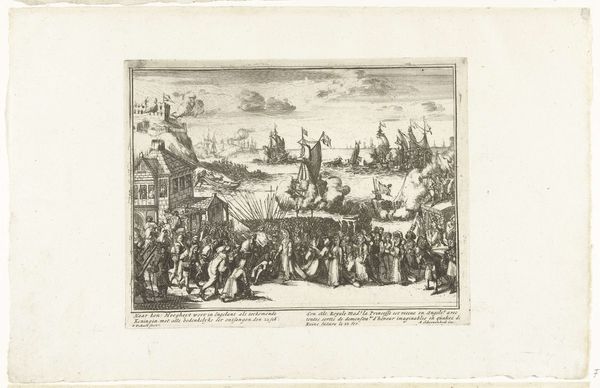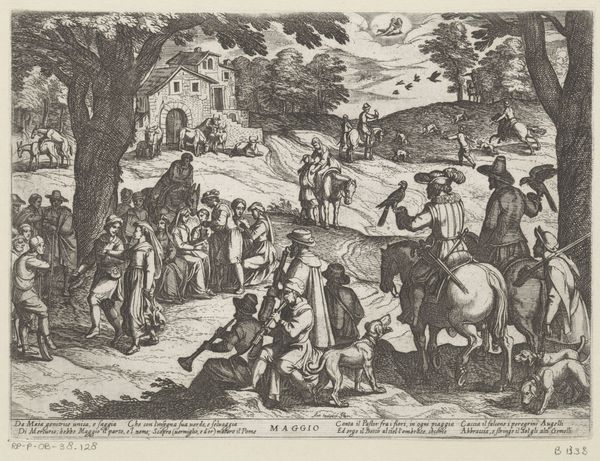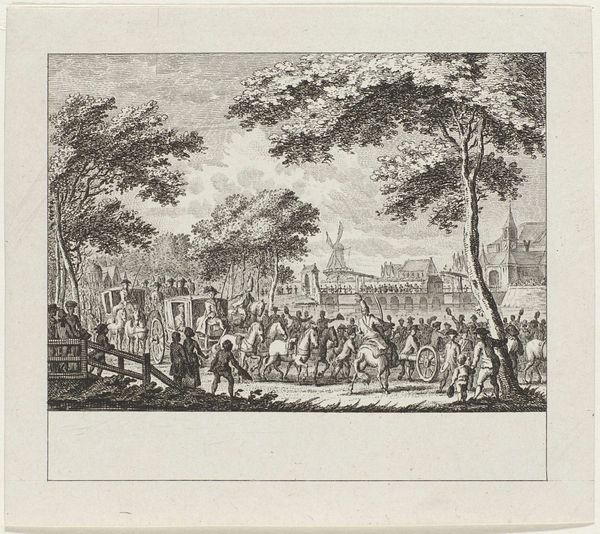
engraving
#
baroque
#
pencil sketch
#
landscape
#
cityscape
#
history-painting
#
engraving
Dimensions: height 155 mm, width 199 mm
Copyright: Rijks Museum: Open Domain
Curator: This engaging engraving, made in 1691 by Pieter Pickaert, is titled "Willem III trekt Dublin in, 1690"—or, "William III Enters Dublin, 1690." Editor: Oh, a procession! I'm immediately struck by this bustling, yet somewhat constrained energy. The etching’s full of detail, almost bursting with little figures, all rendered in precise, delicate lines. Curator: The linear quality is typical of the Baroque style. See how the artist meticulously records the architecture of Dublin in the background, contrasting sharply with the foreground action. This visual layering helps compress space and narrative. Editor: Layers are key. Like emotional aftershocks rippling from a central event. William III on his horse – how is he presented? Is it triumphal, critical, or neutral? He's positioned… almost objectively? Which in itself feels charged. Curator: Objectivity, yes, in a sense. This engraving functions partly as a historical document, representing a key moment in the Williamite War in Ireland. Notice the symbolism of order and authority embedded within the composition—the positioning of the troops, the direction of movement… these all contribute to a narrative of conquest. Editor: And cultural assertion, certainly. Beyond the battles and dates, I can sense an attempt to etch into the cultural memory. What’s compelling to me is the translation of such momentous events into the digestible form of print. It's visual propaganda almost. How do the symbols impact their intended audience? Curator: Print was a powerful way of disseminating such ideologies. Each element carries symbolic weight—William’s attire, his horse, the placement of the Irish citizens along the sides of the road. They project an image of rightful power, creating a clear visual hierarchy. It reinforced political concepts, and collective identity in the wake of conflict. Editor: Even centuries removed from the conflict it’s still a conversation starter! These prints offer an entry point—perhaps, less as factual accounts and more as complex emotional diagrams about how events can sculpt identity over time. Curator: Precisely. What seems fixed can still stimulate our curiosity. The images become points of intersection with histories that persist. Editor: Thank you, I'm definitely leaving with a deeper appreciation for the layering. Not just in the image itself, but within the narrative, and impact across time.
Comments
No comments
Be the first to comment and join the conversation on the ultimate creative platform.
